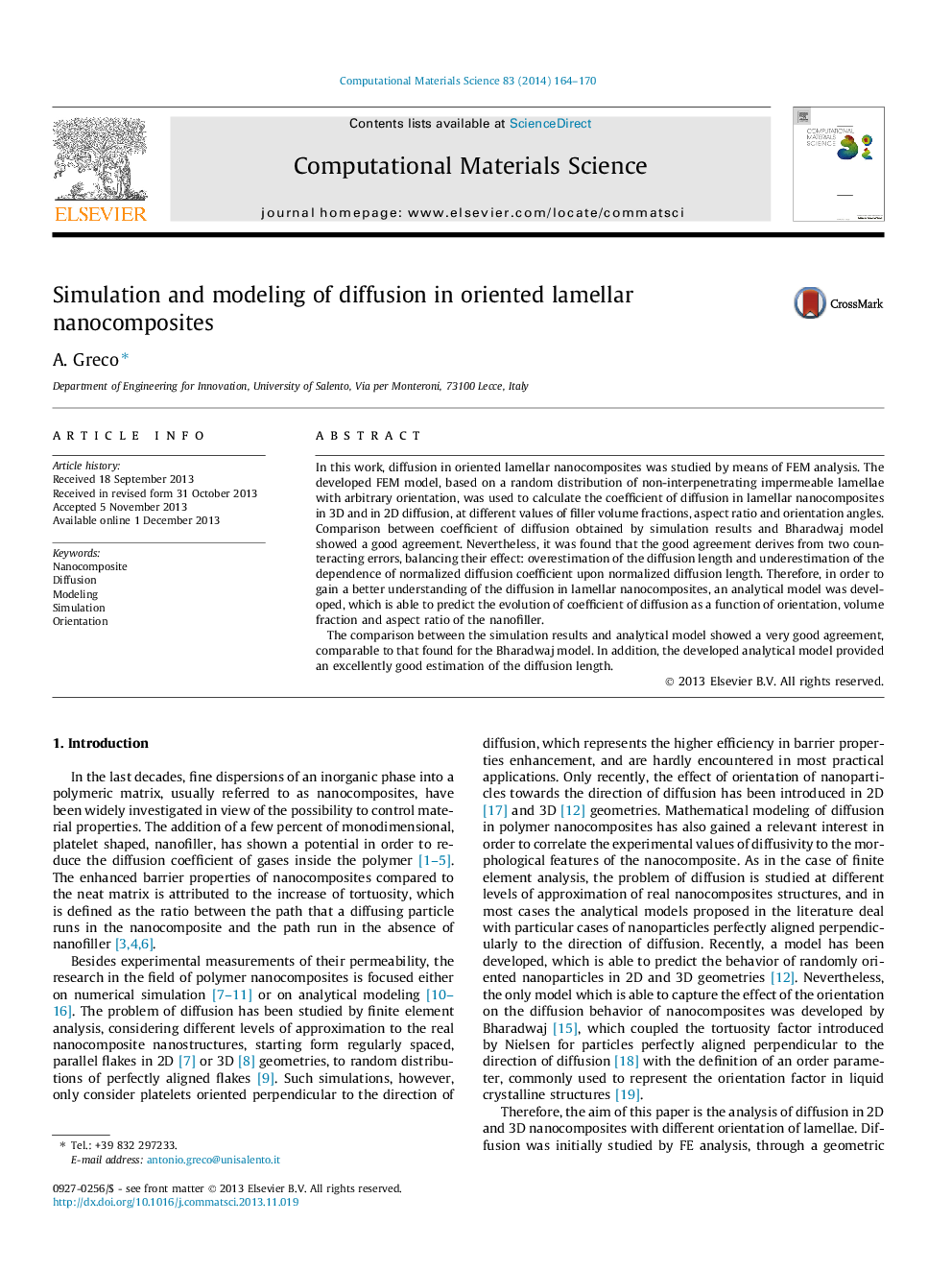| Article ID | Journal | Published Year | Pages | File Type |
|---|---|---|---|---|
| 1561048 | Computational Materials Science | 2014 | 7 Pages |
•We simulated 2D and 3D diffusion in nanocomposites with randomly dispersed, oriented lamellae.•Literature analytical models fail in predicting the simulated diffusion path length.•We developed an analytical model accounting for nanofiller volume fraction, aspect ratio, orientation.•The developed model provided excellent agreement with simulated coefficient of diffusion and path length.
In this work, diffusion in oriented lamellar nanocomposites was studied by means of FEM analysis. The developed FEM model, based on a random distribution of non-interpenetrating impermeable lamellae with arbitrary orientation, was used to calculate the coefficient of diffusion in lamellar nanocomposites in 3D and in 2D diffusion, at different values of filler volume fractions, aspect ratio and orientation angles. Comparison between coefficient of diffusion obtained by simulation results and Bharadwaj model showed a good agreement. Nevertheless, it was found that the good agreement derives from two counteracting errors, balancing their effect: overestimation of the diffusion length and underestimation of the dependence of normalized diffusion coefficient upon normalized diffusion length. Therefore, in order to gain a better understanding of the diffusion in lamellar nanocomposites, an analytical model was developed, which is able to predict the evolution of coefficient of diffusion as a function of orientation, volume fraction and aspect ratio of the nanofiller.The comparison between the simulation results and analytical model showed a very good agreement, comparable to that found for the Bharadwaj model. In addition, the developed analytical model provided an excellently good estimation of the diffusion length.
